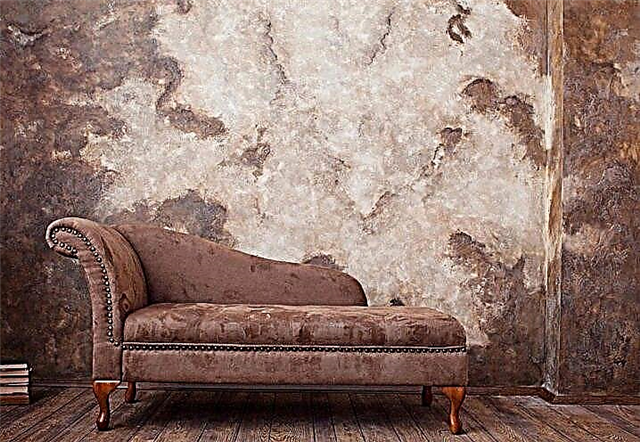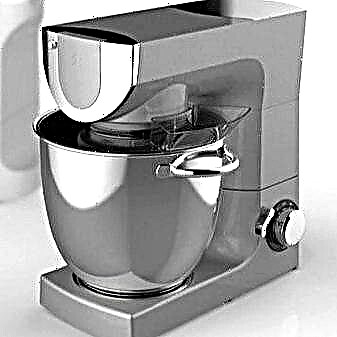Stretch ceilings have recently gained great popularity, because such a ceiling finish has many advantages. This is a quick and clean installation, attractive appearance, perfectly flat surface, hiding relief defects, high tensile elasticity. But, there are also disadvantages, the film can be torn, cut, punctured during operation. Therefore, we want to focus your attention on repairing the tensile structure after a cut.
Why can cuts occur, what is the vulnerability of the ceiling film? The design consists of such components as an aluminum profile and a fabric or PVC fabric. Being fixed on the frame, the canvas is stretched, forming an air gap between the base ceiling. Thus, vulnerability is obtained on both sides.
A mechanical load is possible on the inner surface in case of flooding from above, whether the roof is leaking or neighbors are flooded. At the same time, the elastic stretch ceiling easily withstands tens of liters of water in the area of leaks. But, it is not adapted to point contact, as it has a low margin of safety.
How to prevent repair of stretch ceilings from a cut?
Any repair is easier to prevent than to eliminate, and this should be taken care of in advance at the stage of choosing a ceiling canvas. After all, ceilings are fabric and PVC. Textile fabrics consist of interwoven synthetic threads, therefore they can breathe, and those covered with polyurethane impregnation are able, like PVC, to retain moisture. Film canvases are most diverse in color and design, can be mirrored, glossy, and can hold up to 100 liters of water, but such canvases are unstable to mechanical stress, cuts, punctures with the formation of holes.
How to be here? You should think about whether they should be installed in rooms such as a children's room, a workshop where there are many tools with sharp edges, you need to carefully use an object such as a stepladder. Any decor is dangerous, lamps with sharp corners, especially if they rotate. In the nursery, the stretch belt can be damaged by launching the helicopter on the control panel, throwing cubes and other objects.
Therefore, before proceeding with the installation, carefully consider in which room what type of ceiling to install, and do not chase the cheapness, which will then turn into a hole in the ceiling and expensive repairs, if it can still be done.
How to repair stretch ceilings as a result of a cut?
Whatever the cause of damage to the stretch ceiling, its repair depends on the properties of the canvas, whether it is fabric or PVC film, the nature of the cut or tear. Depending on this, restoration tools and materials will be needed, such as double-sided construction or fabric tape, a knife and scissors, a piece of antenna cable, paint and varnish, a needle and nylon thread. Need a spare flap from the stretch ceiling, a piece of liquid wallpaper, a construction or regular hair dryer, putty knife.
If a hole has formed in the canvas, you should provide an ambulance so that it does not creep further, and then proceed to repair yourself or by inviting specialists. At the same time, double-sided tape will help, if this is not there, you can use ordinary. When the canvas is punctured and the hole is only 1 mm, you can do with the corresponding glue, having missed the puncture and making it almost imperceptible. After providing first aid, you should think about the nature of the cut, maybe the seam has come off, the baguette has come off, it was not your fault and it belongs to warranty repair, unless of course it has already passed. Then you are lucky, feel free to call the specialists who installed the tension system.
If damage to the tensile structure is your fault, then you will have to start an independent repair, but it is much more reliable and safer to invite specialists, however, at an additional cost. It is easier to repair a cut of the fabric ceiling, for which use a nylon thread, choosing it by color. Then gently sew the cut and mask it, painting over with water-based paint.
The second way to restore the film is a patch from a piece of the same fabric or liquid wallpaper, but if there is neither one nor the other, any suitable color fabric will cover the hole area. The patch is cut with allowances of up to 2 cm, the ceiling area with a hole is smeared with colorless glue from the wrong side, the patch is inserted there, leveled and pressed with the palm of the hand to the ceiling. After repair, it is recommended that the entire ceiling be repainted again.
All of the above applies to small cuts, holes, punctures, if the damage is serious, we recommend that you contact a specialist. Our professionals will carry out smoothly and quickly for a small cost repair of the canvas of any complexity. The price in Balashikha will depend on the nature and size of the cut.
Types of paintings
Damage to the canvas can be a lot of different ways - for example, with careless movements during the cleaning process, or during some kind of game. When determining how to close a cut on a stretch ceiling, you need to consider which material was used as the canvas, so first you will have to understand all the materials suitable for these purposes.
All canvases are divided into two main types:
- Fabric. This option is a polyester fabric, which is impregnated with a special composition of polymers. For the manufacture of fabric paintings, synthetic fibers are used, slightly diluted with natural threads. The thickness of such a web is on average about 0.37 mm. However, in this article we are talking primarily about the strength of the material and the possibility of its repair. Fabrics in this regard are quite convenient - they practically do not stretch and have a porous structure, due to which it is quite simple to repair such a material. Replacing the entire blade is only necessary if the cut dimensions exceed 30 cm.
- PVC. The basis of this material are polyvinyl chloride fibers. With a relatively small thickness (from 0.17 to 0.22 mm), the material is notable for its good strength. It can withstand temperatures up to +100 degrees, and when this indicator is exceeded, it begins to melt. In the case of sudden and significant temperature changes, it can crack, resulting in a decrease in web strength. PVC fabric has good elasticity, allowing you to stretch the material if necessary. However, you should not overdo it - strong stretching and pressure on the film can lead to a change in its characteristics, and after repair it will be deformed.
Despite the similarity of composition and application, the materials presented have serious differences, which determine the repair methods that are suitable for each specific situation.
Causes of damage
As already noted above, any fabric used for stretch ceilings, initially has a fairly high strength - but it does not appear at all when it comes to stabbing and cutting influences. The biggest danger that a stretch ceiling can be exposed to is a common cut. Even a small cut in the stretch ceiling violates the integrity of the canvas and leads to complete deformation of the ceiling surface.

To understand how to eliminate a cut on a stretch ceiling, you need to handle it carefully, starting from the stage of its installation. However, in the process of operation, accuracy and understanding of the properties of the material is also required - so, for several days after installation, the material will adapt to new conditions, so you should refrain from any serious work in a room with a newly installed ceiling.
Most often, a cut on a stretch ceiling happens for the following reasons:
- Errors were made during installation, low-quality material was used to equip the ceiling, which in addition was also incorrectly cut,
- Careless rearrangement of large furniture - for example, a cabinet that has sharp edges that could damage the ceiling canvas,
- In children's rooms, it is strongly not recommended to install suspended ceilings - any active games will sooner or later lead to accidental damage to the canvas,
- Very often, the ceiling is damaged accidentally due to careless handling of sharp objects in the room - for example, with further repair of the room, you can pierce the canvas with a screwdriver or cut it with a grinder.
There are quite a few ways to damage the canvas, and as a result of such an impact, you will definitely have to figure out how to fix the cut on the stretch ceiling.
Temporary Ceiling
To perform a temporary repair of a cut of a stretch ceiling, you need to prepare a set of materials and tools, which includes:
- Masking tape or fabric tape,
- Scissors, ordinary tape and a small piece of cable about 10 cm long,
- Patch from the remains of the canvas,
- Kapron thread, needle, varnish and paint,
- Hairdryer and spatula.
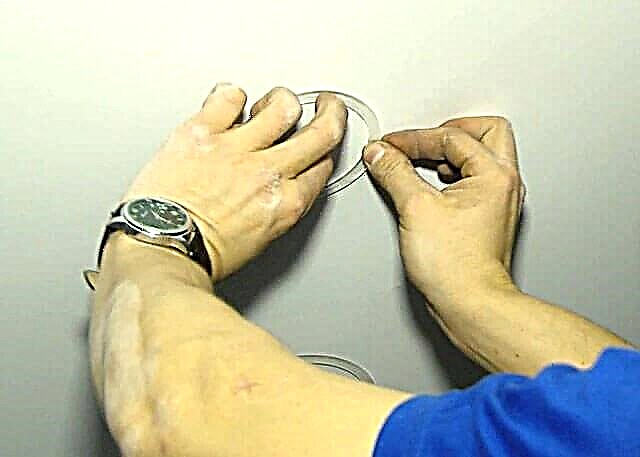
This whole set is necessary for the initial, temporary sealing of the cut. The fact is that small cuts on the surface of the stretched fabric tend to gradually spread, therefore, first of all, measures must be taken to localize the damage so that there is no further rupture of the stretch ceiling.
Small cuts on any canvas can be dealt with very simply - just connect the edges of the cut with tape. To close the puncture punctures with a size of no more than 2 cm, you can even use ordinary glue. Such an option will not be a panacea - it is suitable only as a temporary solution, and in the future, you will still have to carry out a full-fledged repair of the cut of the stretch ceiling with your own hands.
Repair of a cut of a film ceiling
First of all, you need to understand how big the slot in the stretch ceiling is. This is a very important point - if the size of the damage exceeds 15 cm, then the material can no longer be repaired, and it will have to be completely replaced. You also need to evaluate at what distance from the wall the cut is located - if it is removed no further than 20 cm, then you can try to drag the canvas and hide the damaged area in a baguette.

In the latter case, repair of stretch ceilings after a cut with your own hands will look like this:
- An antenna cable is glued directly on top of the cut,
- When the glue has frozen, the canvas needs to be heated with a hairdryer,
- The canvas is neatly pulled to a baguette and refilled with a spatula,
- Next, the material needs to be spread and leveled so that it looks like new.
You also need to figure out what to do if you cut the stretch ceiling at a distance from the wall. Under such conditions, it will be necessary to use more complex repair methods that require detailed consideration.
Overlay patch
To make a patch, a piece of the same canvas is used, which was used in the ceiling itself. The dimensions of the workpiece should be a couple of centimeters larger than the dimensions of the damaged area. So much glue is applied to the patch so that its excess does not protrude outward - it will be impossible to wipe them off the ceiling surface, and the appearance of the structure will be damaged.
The patch is applied to the damaged area and pressed. Excessive effort during this operation is not necessary - folds will appear. The glued patch should be carefully smoothed out after the glue has grabbed a little so that the surface is as even as possible. On this, the repair of the cut of the stretch ceiling can be completed, or you can go even further in the desire to restore good decorative properties to the ceiling.

So, in the future repaired using a patch, you can apply a PVC application or some kind of pattern. Separate PVC flaps are quite suitable for use as patches - but you must always glue them not only over the cut, but also on entire sections of the canvas so that certain places are not allocated. The same goes for simple images.
Before you remove the cut on the stretch ceiling, you need to choose the right version of the glue. There are no special requirements for the adhesive used. By and large, there are only two parameters - the quality of fastening and color. Most modern adhesives are colorless and hold the joining surfaces perfectly, so all such options are suitable for repairing stretch ceilings.
It is best to use the following types of glue:
- Universal glue - reliable, sufficiently strong and durable,
- Specialized adhesive, which is divided into compositions for heavy, medium and light materials,
- Normal superglue.
Mounting the ring for the lamp
This method is relevant only for vinyl paintings. A special ring is glued onto the damaged area, into which fixtures are usually mounted. When the thermal ring is glued, a cloth is cut along its inner perimeter. If the damage is large enough, then nothing will have to be cut.

Using this repair method, you need to take into account that the lamp will eventually be mounted in the same way as any other lighting fixture on a stretch ceiling. Instead of fixtures, you can use a false ventilation grille or smoke detectors to mask damage - they are installed in a similar way.
Repair of fabric stretch ceiling
It is much easier to work with fabric stretch ceilings, which is due to the rather stable structure of the materials used. To determine the repair procedure, you need to figure out how great the damage is.
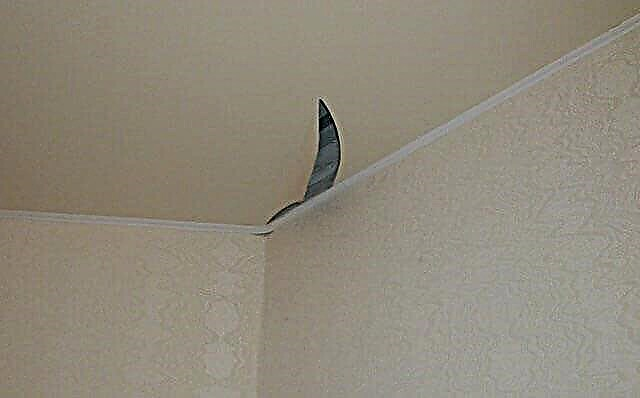
The following methods for repairing a cut on a fabric ceiling are:
- The first method involves the use of kapron threads of the corresponding color. Having retreated from the edge of the damage by at least 3 mm, you need to tighten the canvas. The finished seam should be treated with acrylic-based sealant and a patch should be applied to this place, which will allow you to restore the texture of the fabric. After the sealant has completely hardened, the repaired area can be painted or applied to it.
- On damages that are large, the seam will be too noticeable, so it is best to use a patch that is cut from fabric or glass. The patch is glued to its place with glue. Glue the patch on the inside of the canvas, and when installing the patch, you do not need to put too much pressure on it so that the ceiling does not sag after repair. In the future, it will be possible to cover the material with water-based paint - it will mask all traces of the repair.
- Under suitable conditions, you can use the thermal ring for repair. Damage repair technology looks exactly the same as with film ceilings.
Possible defects
Illiterate repair work in the vast majority of cases leads to the appearance of new damage. Of course, even in the most difficult cases, there are solutions to the problem, so you need to first assess how damaged the ceiling is.

There are a number of defects that cannot be dealt with:
- The canvas, which has completely parted at the seams, will have to be completely pulled again - gluing in this case will not help,
- If the ceiling is torn off the wall, then the canvas will have to be pulled, and the construction of the stretch ceiling should be strengthened,
- If only one baguette comes off, then it can be carefully attached to its place without touching the canvas.
Recommendations for repair and maintenance
To stretch ceiling was as reliable as possible, when installing and repairing it is worth following a number of recommendations:
- In order for patches to stay in place better, repaired areas must be degreased first. For these purposes, a special spray or mild detergent is suitable.
- You need to understand what to do with a cut on a stretch ceiling. Having noticed a cut, you must immediately take measures to prevent its expansion - for example, fastening the edges of the canvas with adhesive tape.
- On the ceiling with photo printing, it makes sense to remove the cut only if after repair it will not be noticeable. If the pattern is deformed as a result of repair work, then the full replacement of the canvas will be the most appropriate solution.
- The air temperature in the room should correspond to the permissible for a particular material (as a rule, the temperature from 0 to 50 degrees is quite comfortable for paintings).
- If the room is wet, then it will be necessary to regularly remove rust. A flannel rag and glass cleaner that does not contain abrasives are best suited for cleaning the web.
- Spotlights installed in a stretch ceiling must have an allowable power. Conventional lamps up to 60 W and halogen lamps below 35 W are suitable for fabric. The film web has a lower power threshold - incandescent lamps can have a power of not more than 40 watts, and halogen ones - up to 20 watts.
- In order for the repair to be as high-quality as possible, it is best to turn to professionals who will find and implement the optimal solution to the problem.
When is repair prohibited?
There are two cases in which the repair of a stretch ceiling is prohibited.
Firstly, do not try to repair the panel, if it crawled at the seams. In this case, the situation will be saved only by re-tensioning the ceiling fabric by a specialist.
Also, do not undertake repairs, when the canvas moved away from the wall. In this, as in the previous case, a reinstallation of the ceiling by a team of specialists is required: strengthening or replacement of the profile and tension of the fabric. In addition, it is worth determining the cause of the incident: the cloth was poorly fixed, or, conversely, the cloth was too tight. Determining the cause will help specialists quickly carry out the necessary repairs.
Both cases are related to warranty, and the installation company must eliminate such damage.


How to fix the ceiling?
If the damage relates to the warranty case (the warranty has not yet expired and the gap occurred without your participation), you should call the specialists from the company that was installing the ceiling, and you will be repaired for free, and they will also give a warranty period for the work performed! Options for self-repair in the event of a non-warranty case will be described later, depending on the type of ceiling.
First of all, when detecting mechanical damage to any type of ceiling urgent measures should be taken to prevent an increase in cut size. This will require double-sided / masking tape. For the lack of such materials, ordinary tape is also suitable.
If the damage is very small (puncture), then it is repaired with glue. Gluing will not allow the canvas to disperse, and the damage itself will be almost imperceptible.


Next, we will tell you how to fix the ceiling yourself if it is damaged.
Fabric
Recall that the fabric ceiling is made of "breathing" natural or synthetic fibers. Mechanical damage to the fabric is eliminated quite easily in one of two ways.
- With the help of kapron threads. Kapron threads are sold in most sewing stores, you just need to choose the right color. This method is used if the cut is thin and has even edges. The cut is carefully sewn up with thread, and the task is completed!
So that the seam is not visible, you can paint over the cut with water-based paint.


- Using patch. This method is advisable to apply for large damage, but with a gap length of more than 30 cm, the ceiling will have to be completely changed. The patch material can be a piece of material of the ceiling itself (if available), cullet, or, in extreme cases, a piece of thick fabric selected by color.
Any patch glue will do, provided it is colorless. However, experts advise using cyanoacrylate-based glue.

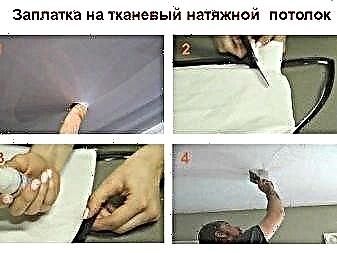
The repair sequence is quite simple: a patch with a margin of about 2 cm is cut out, glue is applied to the patch, and then this patch is pressed to the damaged panel from the inside. It is impossible to press too muchThis may have consequences in the form of a sagging ceiling at the repair site.
Excess glue is removed, and after drying the place is treated with water-based paint from a spray gun.

Film
The canvas for such a ceiling is made of polyvinyl chloride (PVC), due to which it has a smooth glossy or matte surface.
In case of mechanical damage to the PVC sheet larger than 2 cm, it is necessary to contact specialists who, most likely, will advise it to be completely replaced.
If the cut is small, you can try to repair it yourself.
The repair method depends on the location:
- Hiding a cut in a baguette groove. It can be used if the distance from the cut to the edge of the baguette does not exceed 15 cm. You will need a piece of antenna cable and glue. The cable is glued next to the cut parallel to the baguette. While the glue is solidifying, a construction dryer is being prepared for use. Then the cut is heated with a hairdryer, and gently pulled to the edge of the baguette using a cable. The cable is tucked into the groove of the baguette using a flat and blunt tool.
Working in pairs is likely to help avoid wrinkles and bumps. Otherwise, the web folds formed during the process are eliminated in a similar manner with a cable.
- Patch. This case is suitable if the cut is located far from the edges of the baguette. It is better to make a patch from the remnants of the film from the repair kit, which is usually attached to the stretch ceiling, and spread with sealant or glue. Adhesive tape applied to the cut area is removed and a patch is placed in its place. While it dries, it is better to additionally fix it with your hands.
There are some nuances of choosing glue for the patch. It should be transparent and solidify quickly, without having a devastating effect on the PVC fabric. Masters recommend using Cosmofen glue.
You can also use any other adhesive designed to repair stretch ceilings.
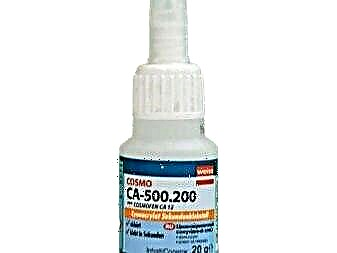
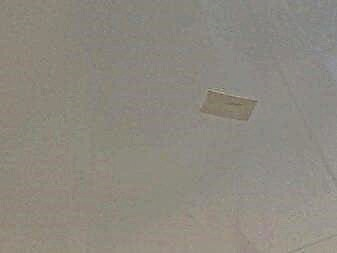
For a piece of patch film, you can contact the manufacturer: usually they have a large number of scraps, and getting the right size will not be a problem.
In addition to the usual patch, there is an option to make an unusual decorative on a damaged ceiling. A patch made in the style of wallpaper will look especially interesting.
- Installation of functional elements in a damaged place. In place of the cut, you can install an additional lamp, a fraudulent ventilation duct grill or a fire alarm sensor. But first, you must protect the cut from sprawling with a special plastic ring. When the area is protected, you can begin installing the lamp or grille.
This method is usually used in offices and public buildings, but it is also applicable for a bathroom or toilet.
- Disguise with a patch or applique. Damage near the chandelier in the presence of imagination is masked by a decorative element that not only eliminates the hassle of replacing the ceiling, but also updates the room. If you play with the shape and color, you can get a great design move.
- It is possible to hide traces of fusion or burning with a special ring made of heat-resistant plastic, which is installed around the lamp. However, if the damage is longer than 20 cm, the blade must be replaced.


Useful Tips
With a large size of the defect, you will have to call the masters to reinstall the ceiling. But in this case, you can still save on the cost of the baguette. Do not try to repair a large defect yourself - this can lead to sad consequences.
And in any case, if you have doubts about your skills, you need to turn to professionals. The manufacturer will advise on the best way to repair the damage, or carry out repairs on their own in a short time and with a guarantee, and will also help if necessary to provide material for the patch (especially if the ceiling is colored).
Also, the choice of actions when cutting the ceiling, having uneven edges, is narrowed. Wherein after gluing the cut on the sides, you need to make its edges even. Then there remains a couple of options - masking with a lamp / grill or any object of your choice or a colored decorative insert.
The fabric ceiling is resistant to mechanical damage, but will not save during flooding. Small cuts in the fabric can be easily removed on their own. Due to the indicated properties fabric ceiling is not recommended for installation in bathrooms. If the family has small children and / or pets (cat, birds) in living quarters, it is better to install a ceiling on a fabric basis.
PVC ceiling to withstand flooding, but with mechanical damage it will be problematic to repair it. Therefore, it is advised to install it in the bathroom or in the kitchen, where the likelihood of flooding is higher than in other parts of the apartment.


To reduce the possibility of damage, do not put a film ceiling in children’s and living rooms. Note that according to statistics, PVC ceilings are installed more often.
On a glossy PVC cloth, all damage that was repaired without replacing the cloth will be much more noticeable in the future than on a matte one.
And remember - observing the rules for operating a stretch ceiling will minimize the likelihood of violating its integrity, and it will please the eye for a long time! With careful handling, the stretch ceiling will last at least 30 years.

Below are the basic rules, observing which, you can avoid repairing the stretch ceiling in the future:
- install the suspended ceiling at the final stage of repair,
- do not install a stretch ceiling in the country house, in the sauna and other rooms that may not be heated,
- recessed luminaires must be up to 40 watts,
- to carefully clean the ceiling panel, for example, using a damp sponge or suede fabric, use non-abrasive products without acetone,
- when cleaning or working with a stretch ceiling, remove jewelry and watches from your hand,
- Do not press on the ceiling panel.
Any damage to the ceiling can be easily repaired by following these tips.
About repair of a cut of a stretch ceiling do it yourself in the next video.
Features
Features of repair of stretch ceilings depend on the type of canvas, the reasons that caused the formation of the cut, its size and the place of damage. Damage to the canvas can be during cleaning, repair, children's games or a holiday with sparklers. In any case, you need to know the tricks that will fix the problem with your own hands.

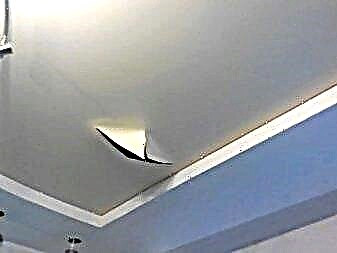
To begin with, we will deal with stretch webs. There are two main types.
Fabric
These are polyester fabrics impregnated with a polymer composition. They are made from synthetic fibers with a slight addition of natural threads. In general, they are quite durable, resistant to sudden changes in temperature. The average thickness is - from 0.35 to 0.39 mm.
But for us, other indicators also matter - the porous structure and low elasticity. It is impossible to stretch them strongly, which in some situations is a plus. It is easier to eliminate minor defects than on a film due to its special structure. The canvas requires a complete replacement only if the damage to the fabric ceiling is more than 30 cm.
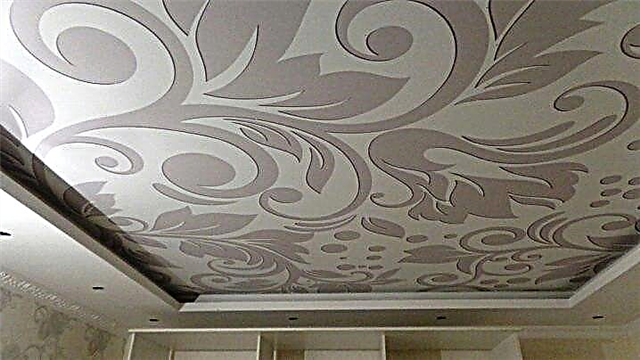
These are canvases based on polyvinyl chloride fibers. The thickness is small - 0.17-0.22 mm, but the material is very durable. It has an antistatic property, does not burn, but melts. Extremely sensitive to temperature changes, due to which cracks can first form, and then film breaks. It can withstand temperatures up to + 100 ° C without losing its properties.
Very elastic - this makes it possible to stretch it a little if the cut is located close to the baguette. But if you strongly press and stretch the film, it will change its shape and size, which will lead to bumps and waves on the ceiling after restoration.

Both types of tension coatings incorporate polymers, but differ in their structure and characteristics of the canvas. Mounting and fastening of structures are also different. Accordingly, their repair will also be carried out in different ways.
How to glue?
Depending on the damage and material for restoration work, you will need the following tools:
- fabric tape or masking tape,
- scissors, stationery tape and a small antenna cable - 10 cm,
- a patch that can be made from a piece of the rest of the canvas,
- nylon thread, needle, paint and varnish,
- hair dryer and spatula.

The first step, which applies to all types of canvas, is the provision of "first aid" to the ceiling - the edges of the cut are quickly glued with double-sided or masking tape. This is done to prevent an increase in the area of damage.
If the cut is more like a puncture and is no more than 2 cm, it can be immediately repaired, sealed with a round patch or filled with adhesive. All this will ensure the preservation of the tightness of the material and prevent it from creeping.


Restoration of the film ceiling
First, we assess the damage, determine its size and location on the eye. It is worth noting that do-it-yourself completely eliminate only small defectssince the PVC film is difficult to repair.
Large cuts, over 15 cm, cannot be repaired independently. Closely located to the wall - no further than 15-20 cm - damage can be pulled and hidden in a baguette groove.
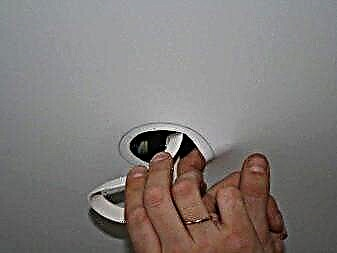

- Along the cut, parallel to the baguette, glue a piece of the antenna cable. We wait until the glue has completely dried.
- After we heat the canvas with a hairdryer.
- Gently pull it to the baguette and refill using a spatula.
- We straighten the canvas so that there are no waves left.
- If roughness has formed on the sides of the cut, then they need to be aligned. To do this, we also glue the cable and pull it to the groove of the baguette.


If the defect is located far from the wall, then you can use several methods to eliminate it.
Method 1: Overlay Patch
We take an identical canvas and cut an oval patch out of it, in size it should be 2-3 cm larger than the main damage. After gently apply glue to it, so that there is no excess. Otherwise, traces of glue will remain on the hands and on the ceiling, which will greatly spoil its appearance.
We apply a shred to the cut and press it with moderate force. It is impossible to press too much, as wrinkles may form. When the patch has seized, slightly smooth it. Subsequently, such patches can be masked with a pattern or PVC application.


PVC application is successfully used as a patch, attaching to sealant or adhesive. However, it is worth adding such stickers (drawings) to entire sections so that the stretch ceiling has a visually completed look and design.
There are no special requirements for the adhesive used, the main thing is that he quickly and accurately grasp and be colorless. You can use superglue, ordinary PVA (latex), universal or specialized adhesive for a specific material.
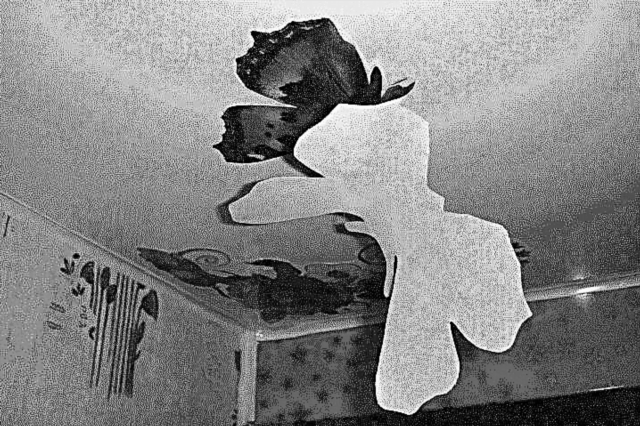
For bonding, you can purchase the following forks of adhesive composition:
- Universal glue - has a good adhesive function, thanks to the resins included in it.
- Specialty Adhesiveis divided into categories:
- for heavy materials - non-woven, vinyl,
- for medium materials - fabric, acrylic wallpaper,
- for light materials - paper wallpaper.
- Regular superglue.

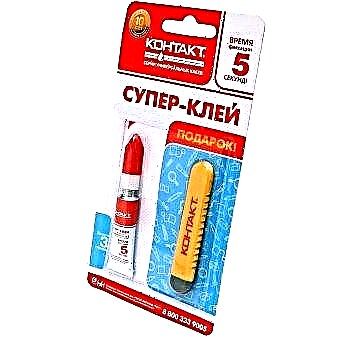
Method 2: installation in place of the cut for the lamp
Suitable for vinyl film. A special sealing (or tread) thermo-ring is glued to the damage area, after the blade is cut, following the inner edge of the ring. This will be the basis for the future lamp. Such a ring does not allow the vinyl to tear further and takes on the load from the tension.
If a palm can be inserted into the damage, then the lamp suspension is mounted on the base without cutting anything.
It should be borne in mind that the wiring should not be located on the surface of the canvas and it must be mounted as if in tension between the lamps. The luminaires can be replaced by a blende ventilation grille or smoke detectors, the method of installation is identical.

More clearly, the repair of a stretch ceiling made of PVC is shown in the next video.
Tips & Tricks
Some tips and advice on the proper operation of the stretch ceiling and repair.
- When gluing patches, the surface of the canvas must be degreased in advance for better adhesion. You can degrease using a special spray to care for stretch ceilings or ordinary detergent, which should not be aggressive in effect.
- When damage occurs, be sure to fix the edges with pieces of tape. This is done to prevent the increase in damage area under the influence of tension.
- Damage to the canvas with photo printing is repaired only if the cut is insignificant and will not be visible after restoration. If the integrity of the picture is violated, then a new image must be applied to the ceiling.

- It is important that the room temperature is between 0 ° C and 50 ° C.
- In wet rooms, rust drops must be removed in a timely manner. Wipe the cloth better with a flannel cloth, preferably colorless. For cleaning, a glass cleaner is used that does not contain abrasive materials,
- For fabric canvas, incandescent lamps up to 60 W and halogen lamps up to 35 W are acceptable. Incandescent lamps up to 40 W and halogen up to 20 W are acceptable for a film ceiling. If the indicators are exceeded, then inevitably black marks from heating appear.
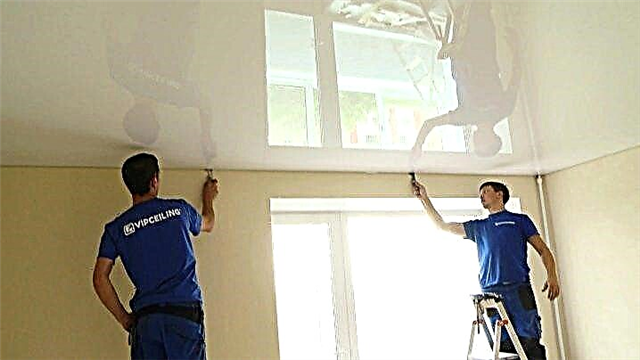
- Before you begin to repair the damage, you need to make sure that the cause of the cut did not become a manufacturing defect. That is, the cut was formed without direct mechanical impact. In this case, you need to contact the company that carried out the installation, and it will conduct a free repair.
- However, if the owner himself is to blame for the damage to the canvas, but the warranty period has not yet expired, then doing the restoration yourself is not worth it, but it is better to turn to professionals for help. The wizard will be able to repair the cut faster and better, as well as retain the warranty benefits in the event of a failed repair.

Damage to the tension web does not always require replacement. Small and minor defects are easy to repair with your own hands, most often do not leave visible marks and imperfections.
In any case, it is better to seek the advice of a specialist in order to correctly assess the degree of damage and to qualitatively do the restoration work.


